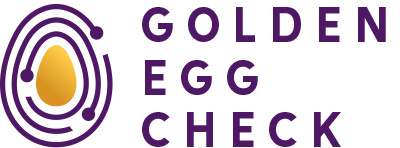Getting investors excited about your startup requires more than a great product or impressive growth metrics. You need to clearly communicate why your company will outperform competitors and maintain that edge over time. This guide shows you how to identify, structure, and present your competitive advantages in ways that resonate with different types of investors.
By following this process, you’ll develop a compelling competitive advantage narrative that reduces investor risk perception and demonstrates your deep market understanding. You’ll also learn to adapt your message for different investor types and handle competitive concerns with confidence.
Why investors need to understand your competitive edge
Investors evaluate hundreds of startups, and most fail to clearly articulate what makes them different. When you present a compelling competitive advantage, you address three critical investor concerns simultaneously.
Your competitive positioning directly influences investment attractiveness by reducing perceived risk. Investors need to understand how you’ll defend market share against existing players and new entrants. Without this clarity, even promising startups appear vulnerable to competitive threats.
A well-articulated competitive advantage demonstrates market understanding beyond surface-level research. It shows you’ve identified specific customer pain points that competitors haven’t addressed effectively. This depth of insight signals to investors that you understand your market dynamics and can navigate competitive challenges.
The connection between competitive positioning and funding success becomes clear when you consider investor decision-making processes. Venture capitalists typically want to see a solution that’s ten times better, faster, or cheaper than existing alternatives. Marginal improvements rarely justify the risks of startup investment.
Your competitive edge also helps investors envision your growth trajectory. They need to understand not just what makes you different today, but how you’ll maintain and expand that advantage as you scale. This forward-looking perspective is what transforms a good pitch into a fundable opportunity.
Identify your unique value drivers before the pitch
Start by conducting an honest internal analysis of your company’s strengths. Gather your team and examine what you do differently from competitors, not just what you do better.
Create a comprehensive list of your capabilities across these areas:
- Technology and intellectual property
- Team expertise and background
- Market positioning and customer relationships
- Business model and revenue streams
- Operational efficiency and cost structure
For each capability, ask yourself whether it’s truly unique or simply well-executed. Investors distinguish between competitive advantages (things competitors cannot easily replicate) and competitive strengths (things you do well but others could match).
Examine your traction data to identify patterns that reveal competitive advantages. Look for metrics where you consistently outperform industry benchmarks. This might include customer acquisition costs, retention rates, or time-to-value for new customers.
Warning: Avoid common mistakes like claiming “no competition” or focusing solely on features. Investors know every market has competition, and features alone rarely create sustainable advantages.
Validate your perceived advantages by gathering external feedback. Talk to customers about why they chose you over alternatives. Review competitor analysis to ensure your advantages are genuinely differentiating rather than table stakes for your industry.
Document specific examples and data points that support each advantage. Vague claims about being “better” or “faster” won’t convince investors. You need concrete evidence that demonstrates measurable superiority.
Structure your competitive advantage narrative
Transform your list of advantages into a coherent story that builds investor confidence progressively. Your narrative should connect individual strengths to broader market opportunities and long-term defensibility.
Begin with your most compelling and defensible advantage. This becomes your primary differentiator – the main reason investors should choose your startup over others. Support this with 2-3 secondary advantages that reinforce your market position.
Structure your narrative using this framework:
- Market context: Explain the specific problem or inefficiency your advantage addresses
- Your solution: Describe how your approach differs from existing alternatives
- Evidence: Provide data, customer feedback, or traction metrics that validate your advantage
- Sustainability: Explain how you’ll maintain and expand this advantage over time
Connect each advantage to specific business outcomes. Show how your competitive edge translates into faster customer acquisition, higher retention rates, or improved unit economics. This connection helps investors understand the commercial value of your differentiation.
Address how your advantages compound over time. The strongest competitive positions create virtuous cycles where early success makes future success more likely. Network effects, data advantages, and brand recognition often strengthen with scale.
Sequence your advantages logically to build a compelling case. Start with immediate, provable advantages before moving to strategic, long-term positioning. This approach establishes credibility before making broader claims about future market dominance.
What language resonates with different investor types?
Venture capitalists focus on scalability and market size potential. They want to hear about advantages that become stronger as you grow. Use terms like “network effects,” “data moats,” and “platform dynamics” when relevant to your business model.
When speaking to VCs, emphasise how your competitive advantages enable rapid scaling. They’re particularly interested in advantages that create winner-take-all dynamics or allow you to capture disproportionate market share.
Angel investors often prioritise team capabilities and execution advantages. They want to understand why your specific team can build and maintain competitive superiority. Focus on unique expertise, industry relationships, or proprietary insights that your team possesses.
Strategic investors seek advantages that align with their corporate objectives. They’re interested in how your differentiation complements their existing capabilities or opens new market opportunities. Frame your advantages in terms of strategic value and potential synergies.
Adapt your terminology based on your audience’s background:
- Tech-focused investors understand technical differentiation and IP positioning
- Industry specialists appreciate operational advantages and market dynamics
- Financial investors focus on advantages that drive superior unit economics
Avoid jargon that doesn’t add clarity. Every investor type values clear communication over impressive-sounding terminology. Use specific language that demonstrates expertise without creating confusion.
Prepare different versions of your competitive advantage story for different contexts. A 30-second elevator pitch requires different emphasis than a detailed due diligence presentation.
Present competitive positioning in your pitch deck
Integrate your competitive advantages throughout your pitch deck rather than confining them to a single “competition” slide. This approach reinforces your differentiation across multiple contexts.
Include competitive positioning in these key slides:
- Problem slide: Highlight problems that existing solutions haven’t addressed effectively
- Solution slide: Emphasise unique aspects of your approach
- Market slide: Position yourself within competitive landscape
- Traction slide: Show metrics that demonstrate competitive superiority
- Team slide: Highlight expertise that creates competitive advantages
Create a dedicated competitive analysis slide that positions you favourably without disparaging competitors. Use a comparison matrix that shows where you excel while acknowledging competitor strengths in other areas.
Visual elements enhance competitive positioning presentations. Use charts, graphs, and diagrams to illustrate your market position and performance advantages. Data visualisation makes competitive claims more credible and memorable.
Success indicator: Your competitive advantages should be clear to someone reading your pitch deck without verbal explanation. Test this by having someone unfamiliar with your business review your slides.
Position your competitive slide strategically within your pitch flow. Place it after you’ve established the problem and solution but before diving into business model details. This sequence allows investors to understand your differentiation before evaluating commercial potential.
Include specific metrics and customer quotes that validate your competitive claims. Third-party validation carries more weight than self-reported advantages.
Address investor concerns about market competition
Prepare for common investor questions about competitive threats and market saturation. These concerns arise in nearly every investment conversation, so anticipate them proactively.
When investors ask about new competitors entering your market, acknowledge that success attracts competition while explaining your defensive strategies. Focus on advantages that become stronger over time rather than static differentiators.
Address market saturation concerns by demonstrating deep market understanding. Show that you’ve identified underserved segments or inefficiencies that competitors haven’t recognised. This positions you as a market creator rather than a market follower.
Develop response frameworks for these frequent questions:
- “What happens when [large competitor] enters your market?”
- “How do you know customers won’t switch to cheaper alternatives?”
- “What prevents competitors from copying your approach?”
- “How sustainable are your current advantages?”
Pro tip: Practice answering competitive questions with confidence rather than defensiveness. Investors expect competition and want to see that you’ve thought strategically about competitive dynamics.
Prepare specific examples of how you’ve already competed successfully. Share stories about winning customers from competitors or defending against competitive threats. Real examples carry more weight than theoretical responses.
Acknowledge areas where competitors are strong while redirecting conversation to your differentiated strengths. This balanced approach demonstrates market awareness and strategic thinking.
During due diligence conversations, provide detailed competitive analysis that shows ongoing monitoring of market dynamics. Investors want to see that you’re staying ahead of competitive developments rather than reacting to them.
Articulating your competitive advantage effectively transforms investor conversations from feature comparisons to strategic discussions about market positioning and long-term value creation. The frameworks and techniques in this guide help you present your differentiation with confidence while addressing investor concerns proactively.
Remember that competitive advantage communication is an ongoing process. Refine your narrative based on investor feedback and evolving market conditions. The startups that secure funding are those that can clearly explain not just what makes them different today, but how they’ll stay ahead tomorrow.
Ready to strengthen your investor readiness across all evaluation criteria? At Golden Egg Check, we help startups identify and articulate their competitive advantages using research-based assessment frameworks. Our structured approach ensures you present your differentiation in ways that resonate with investors and reduce perceived risk.




